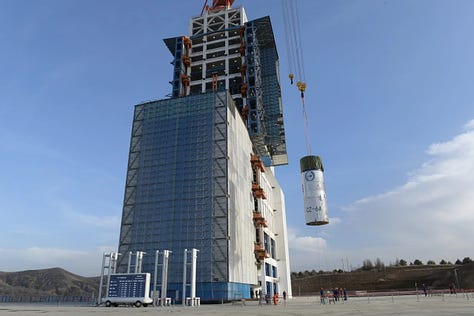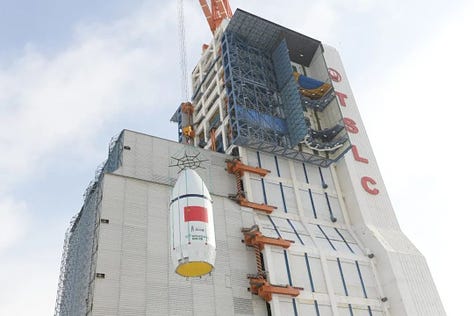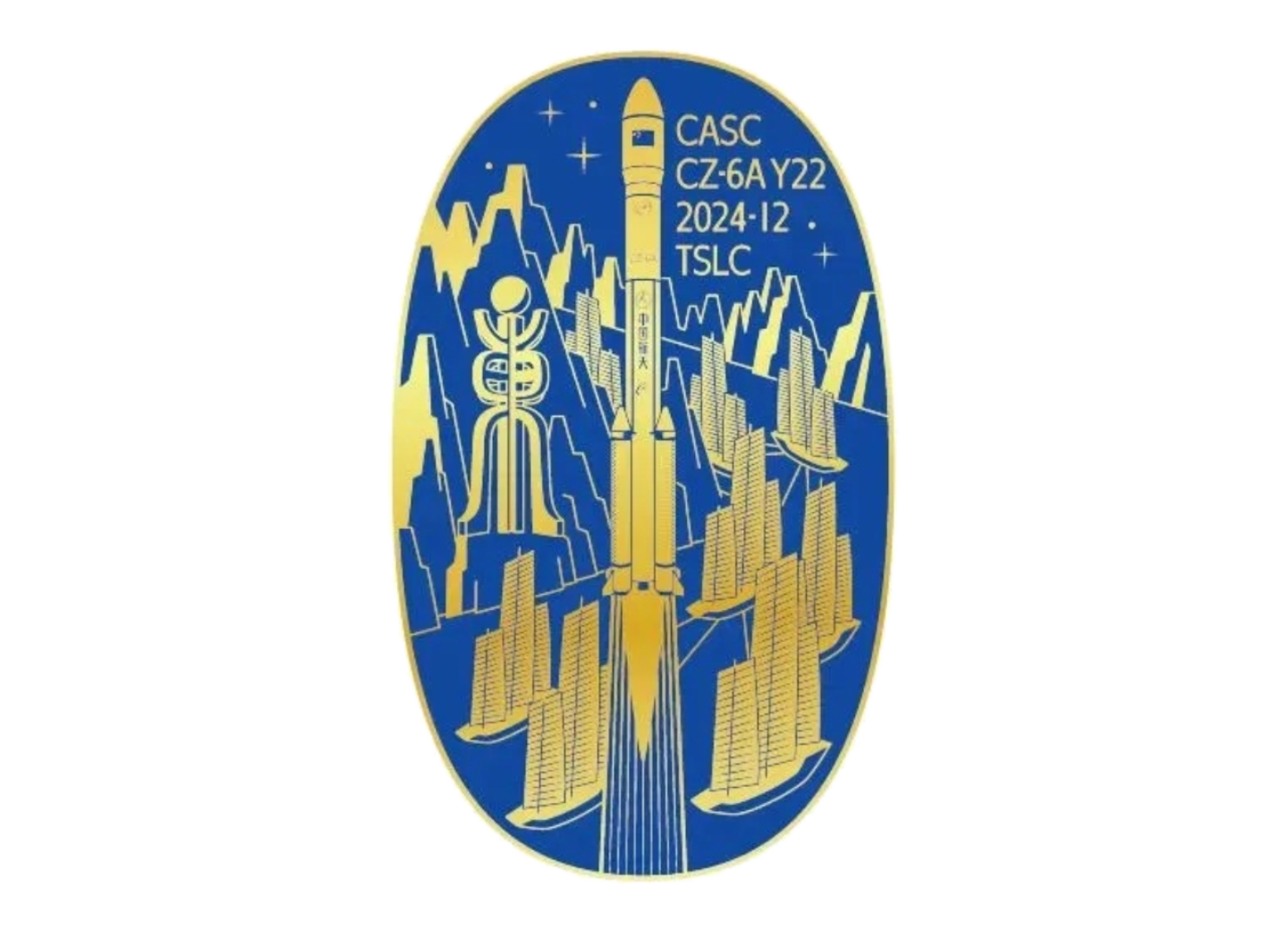Mega-constellation in a Winter Wonderland [Long March 6A Y22]
The third group of Qianfan satellites were placed into orbit by a Long March 6A.

A Long March 6A blasted off from Launch Complex 9A at the Taiyuan Satellite Launch Center at 12:41 pm China Standard Time, or 04:41 am Universal Coordinated Time, on December 5th. This launch was for the third batch of Qianfan satellites.
Like the last two launches of Qianfan satellites, eighteen satellites were atop of the vehicle for the launch. All eighteen satellites were deployed from the vehicle’s second-stage in polar orbit once orbit was confirmed. Deployment of these satellites brings the total number of Qianfan satellites launched up to fifty-four.
Today’s launch of Qianfan satellites was from a snow-covered Taiyuan Satellite Launch Center, which provided additional challenges for the launch, having been originally expected to liftoff on December 2nd. The Shanghai Academy of Space Technology commented on the weather challenges stating:
“As China's new-generation main medium-sized launch vehicle, the Long March 6A launch vehicle has entered the high-density launch stage. The model continues to optimize the staffing of the launch site, ground equipment recovery, test operation procedures, and further shorten the launch interval to meet future intensive launch needs. This mission is a winter launch, and the test team has organized various systems to carry out a comprehensive low-temperature adaptability review of the products on the rocket and ground equipment to ensure that the winter low-temperature launch requirements are met.”
If there are any problems with this translation please reach out and correct me.
To combat the cold temperatures, additional insulation was added to ground-side support equipment along with air conditioning critical rocket components and the satellites up until launch.
According to Skyfeather (天宇), a group of Chinese launch photographers and space enthusiasts, temperatures ahead of the launch reached minus twenty-six degrees Celsius.

For 2024, 108 Qianfan satellites are planned to be launched, possibly for four more launches this year if they are launched in groups of 18. Longer-term plans for the constellation will have it provide regular internet coverage in China by the end of 2025, and regular internet coverage worldwide by the end of 2027. By the end of 2030, 15,000 satellites are planned to be in orbit.
Brazil signed an agreement with China’s National Data Administration and Shanghai Spacecom Satellite Technology recently to provide connectivity to Brazil’s most remote regions, possibly also being included in service plans beginning in 2025.
Each Qianfan satellite is believed to weigh 300 kilograms with a 'flat pack' design to fit as many satellites as possible inside the rocket fairing. For maneuvering on orbit, each satellite has an electric hall-effect thruster burning krypton to generate 20 millinewtons of thrust, with a specific impulse of 1,385 seconds.
The Qianfan (千帆) mega-constellation, formerly called G60 Starlink and sometimes referred to as SpaceSail, is operated by Shanghai Spacecom Satellite Technology, which the Shanghai municipal government partly backs. Qianfan is also part of Shanghai's plan to foster a strong space industry between 2023 and 2025.
Today’s launch was the 9th mission for the Long March 6A, the 225th Long March vehicle launch from the Shanghai Academy of Spaceflight Technology, and the 550th launch of the Long March launch vehicle series. This was also the 62nd launch from China in 2024.
Liftoff footage via China航天, 中国航天科技集团, and 空天逐梦 on Weibo.
The headline is a reference to the wildly popular song ‘Winter Wonderland’
Check out the previous Long March 6A launch
What is the Long March 6A?
This section is for those less familiar with China's Long March series of launch vehicles.
The Long March 6A is the first new-generation launch vehicle in China to utilize a combination of solid and liquid propellants. This vehicle was developed by the Shanghai Academy of Spaceflight Technology and utilizes a two-and-a-half-stage design, the boosters burn an unspecified solid propellant with the first and second stages burning rocket-grade kerosene and liquid oxygen.
The payload capacity of the launch vehicle is currently as follows:
8,000 kilograms to low Earth orbit
4,500 kilograms to a 700-kilometer sun-synchronous orbit
The first-stage is powered by two YF-100 engines, generating a combined thrust of approximately 244 tons using rocket-grade kerosene and liquid oxygen. The first-stage is augmented by four solid rocket boosters, each producing 124 tons of thrust from an unspecified solid propellant, resulting in a combined booster thrust of 492 tons. Together, the first-stage and boosters generate a total thrust of 736 tons. The second stage is powered by a single YF-115 engine, producing 18 tons of thrust using also burning rocket-grade kerosene and liquid oxygen.
On the launchpad, the Long March 6A is believed to be up to 52 meters tall, two fairings are available with one 2 meters taller than the other, and weighs 530,000 kilograms when fully fuelled. The first and second stages of the vehicle have a diameter of 3.35 meters while the solid-fuelled boosters have a diameter of 2 meters, the fairing has a diameter of 4.2 meters.
So far every Long March 6A has launched from the Taiyuan Satellite Launch Center, in the north of Shanxi province.









![It's space internet time [Long March 6A Y20]](https://substackcdn.com/image/fetch/w_1300,h_650,c_fill,f_auto,q_auto:good,fl_progressive:steep,g_auto/https%3A%2F%2Fsubstack-post-media.s3.amazonaws.com%2Fpublic%2Fimages%2Ff1d7f2f5-a0aa-449c-bd7b-1e6efae540e0_2000x1161.jpeg)
